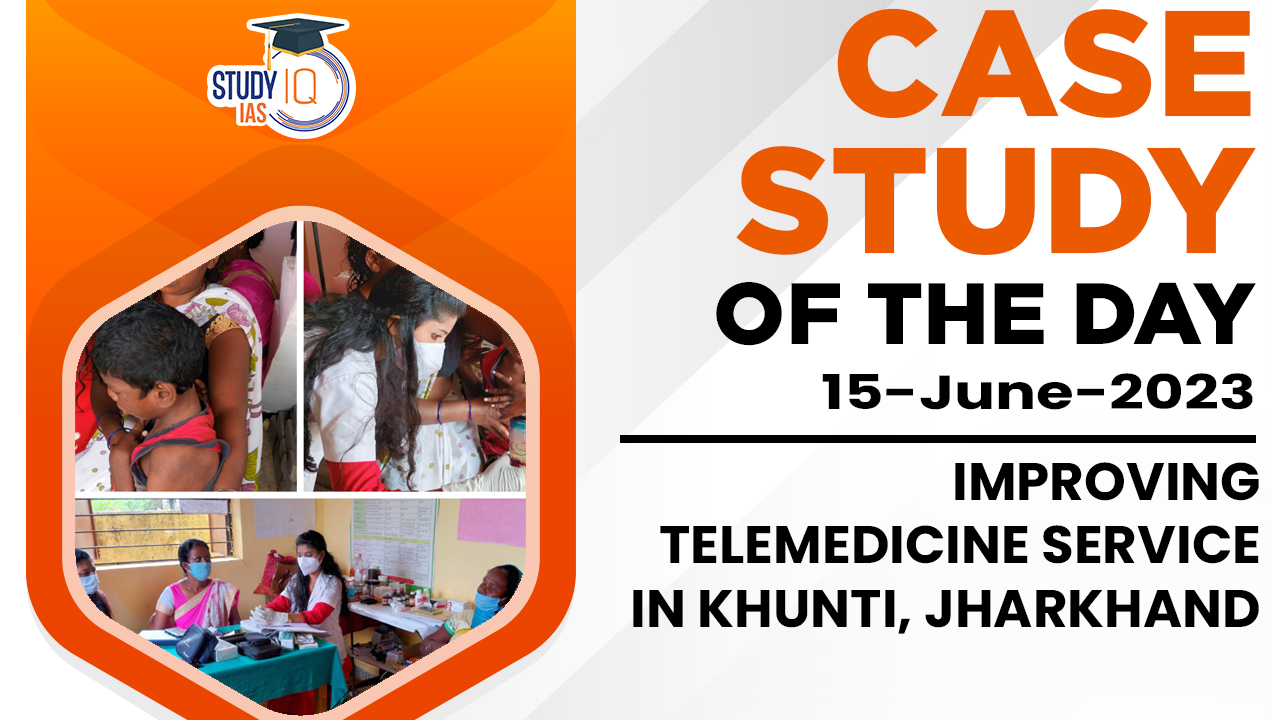Table of Contents
Introduction
- Khunti, a district in Jharkhand, faces significant challenges in providing adequate healthcare services to its population.
- The region has limited healthcare infrastructure, a scarcity of medical professionals, and poor accessibility to healthcare facilities.
- These factors contribute to inadequate healthcare access and compromised patient outcomes. To address these challenges, the implementation of telemedicine services was identified as a potential solution.
Objectives
- Enhance healthcare access for the population, especially in remote areas.
- Improve the efficiency of healthcare delivery by reducing patient wait times.
- Enable remote consultations and diagnosis for patients with limited mobility.
- Facilitate timely specialist referrals and access to expert opinions.
- Enhance healthcare outcomes by providing early intervention and preventive care.
Implementation Strategies
- Establishing Telemedicine Centres: Telemedicine centres were set up in various locations across Khunti district. These centres were equipped with the necessary infrastructure, including computers, high-speed internet connectivity, audio-visual devices, and diagnostic tools.
- Training Healthcare Personnel: Healthcare professionals, including doctors, nurses, and technicians, were trained in telemedicine practices. They were educated on the operation of telemedicine equipment, patient communication protocols, and maintaining patient privacy and confidentiality.
- Technology Infrastructure: Robust internet connectivity was ensured in the telemedicine centres to facilitate seamless video consultations and transmission of medical data. The centres were equipped with secure electronic health record (EHR) systems to store patient data securely.
- Collaborations with Specialists: Partnerships were established with specialist doctors and healthcare institutions outside the region. These collaborations allowed for remote consultations, expert opinions, and specialist referrals for complex cases.
- Community Awareness Programs: Extensive awareness campaigns were conducted to educate the community about the benefits and usage of telemedicine services.
Outcomes and Impact
- Increased Access: Telemedicine services have significantly improved access to healthcare, especially for those residing in remote areas. Patients no longer need to travel long distances for consultations, reducing financial burdens and time constraints.
- Timely Interventions: Through telemedicine, patients receive timely interventions, allowing for early detection and prevention of diseases.
- Specialist Consultations: Telemedicine enables remote consultations with specialists, resulting in improved diagnosis and treatment plans for patients with complex medical conditions.
- Reduced Wait Times: With telemedicine, patients experience reduced wait times for consultations. It has streamlined the healthcare delivery process, enabling more patients to be attended to within a shorter period.
- Cost Savings: Telemedicine services have reduced healthcare costs for patients by eliminating travel expenses and minimizing the need for hospital visits.
Challenges and Future Considerations
- Connectivity Issues: In certain remote areas, reliable internet connectivity remains a challenge, hindering seamless telemedicine service delivery.
- Digital Literacy: Some individuals may face difficulties in adopting and utilizing telemedicine services due to limited digital literacy.
- Quality Assurance: Ensuring the quality and accuracy of telemedicine services is crucial. Regular monitoring, evaluation, and feedback mechanisms should be implemented to maintain service standards and patient satisfaction.
- Sustainability: Long-term sustainability of telemedicine services requires ongoing financial support, technological upgrades, and continuous training for healthcare professionals.
Conclusion
- Telemedicine has emerged as a valuable tool in overcoming geographical barriers and addressing healthcare disparities.
- Continued efforts to address challenges and expand telemedicine services will further strengthen the healthcare landscape in Khunti and other underserved regions.


 TALASH Initiative: Objective, Key Featur...
TALASH Initiative: Objective, Key Featur...
 Custodial Deaths in India, Types, Issues...
Custodial Deaths in India, Types, Issues...
 MPPSC FSO Recruitment Notification 2025 ...
MPPSC FSO Recruitment Notification 2025 ...





















